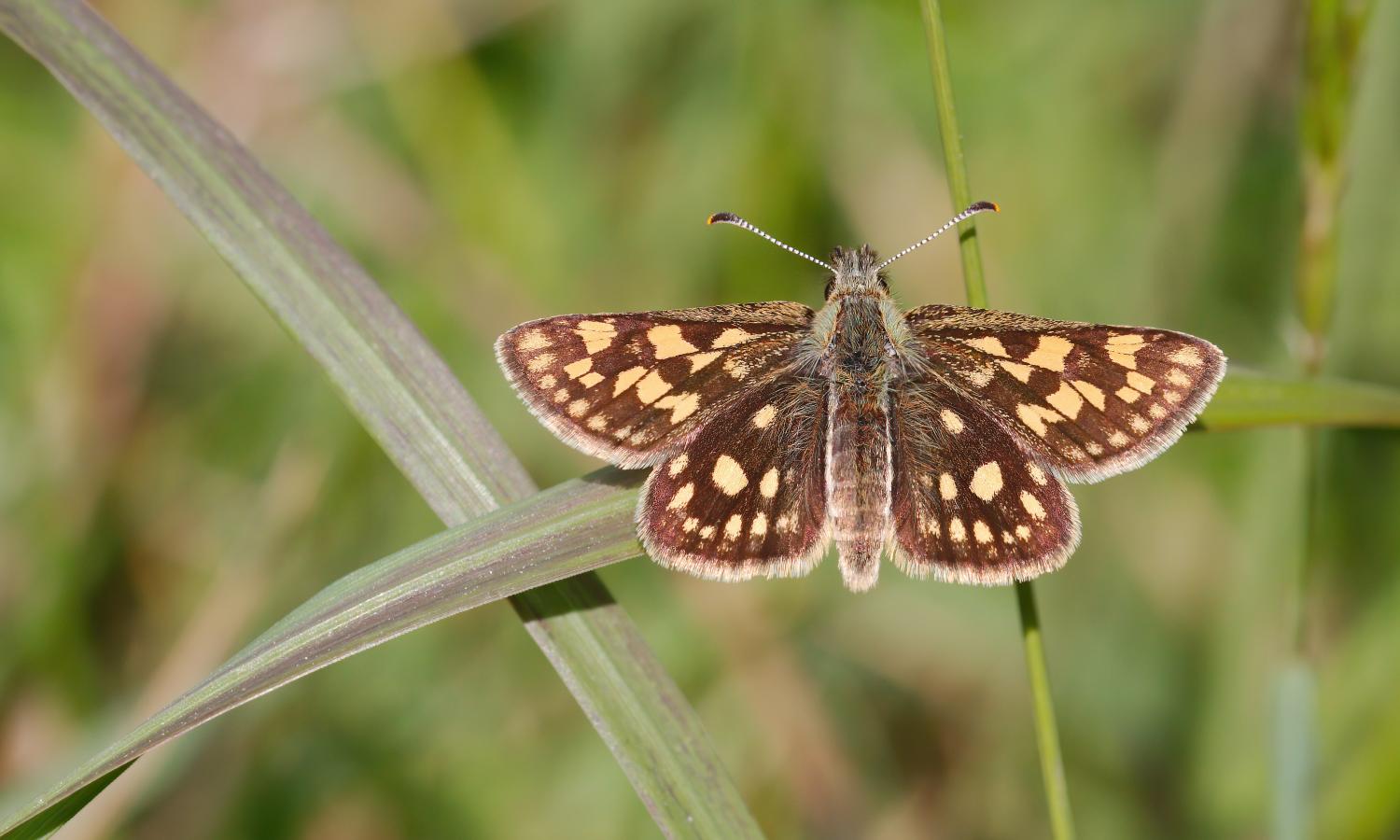This small, fast-flying butterfly is now restricted to damp grassy habitats in western Scotland and a recently reintroduced population in eastern England. Males are seen more frequently than females, perching in sheltered positions either next to wood edges or amongst light scrub or bracken. They dart out to investigate passing objects, defending their territory against other males and other butterfly species, or in the hope of locating a potential mate. Females are less conspicuous and fly low among grasses when egg-laying.
The Chequered Skipper died out from England in 1976 but it has been reintroduced from continental Europe as part of a long-term conservation plan. In Scotland, there are thought to be about ten core areas and there have been no obvious recent changes in range.
Size and Family
- Family – Skippers
- Small Sized
- Wing Span Range (male to female) - 29-31mm
Caterpillar Foodplant Description
The main foodplant in Scotland is Purple Moor-grass (Molinia caerulea). In England, it is mostly associated with Wood Small-reed (Calmagrostis epigejos) and False-brome (Brachypodium sylvaticum), though a range of grasses may be used as they are in continental Europe.
Lifecycle

Habitat
In Scotland, the butterfly breeds on open damp grassland, dominated by tall Purple Moor-grass. Favoured sites are on the edges of open broadleaved woodland as richer soils produce a lusher growth of the foodplant.
In England, the butterfly breeds in flower-rich woodland rides and glades, dominated by Wood Small-reed. Adults nectar primarily on Bugle (Ajuga reptans), but will use other plants in flower during their flight period.
Former colonies in England could also also be found occasionally in fens or ungrazed calcareous grassland amongst the scrub. It may also have bred formerly in damp coppiced woodland as it does elsewhere in northern Europe.

